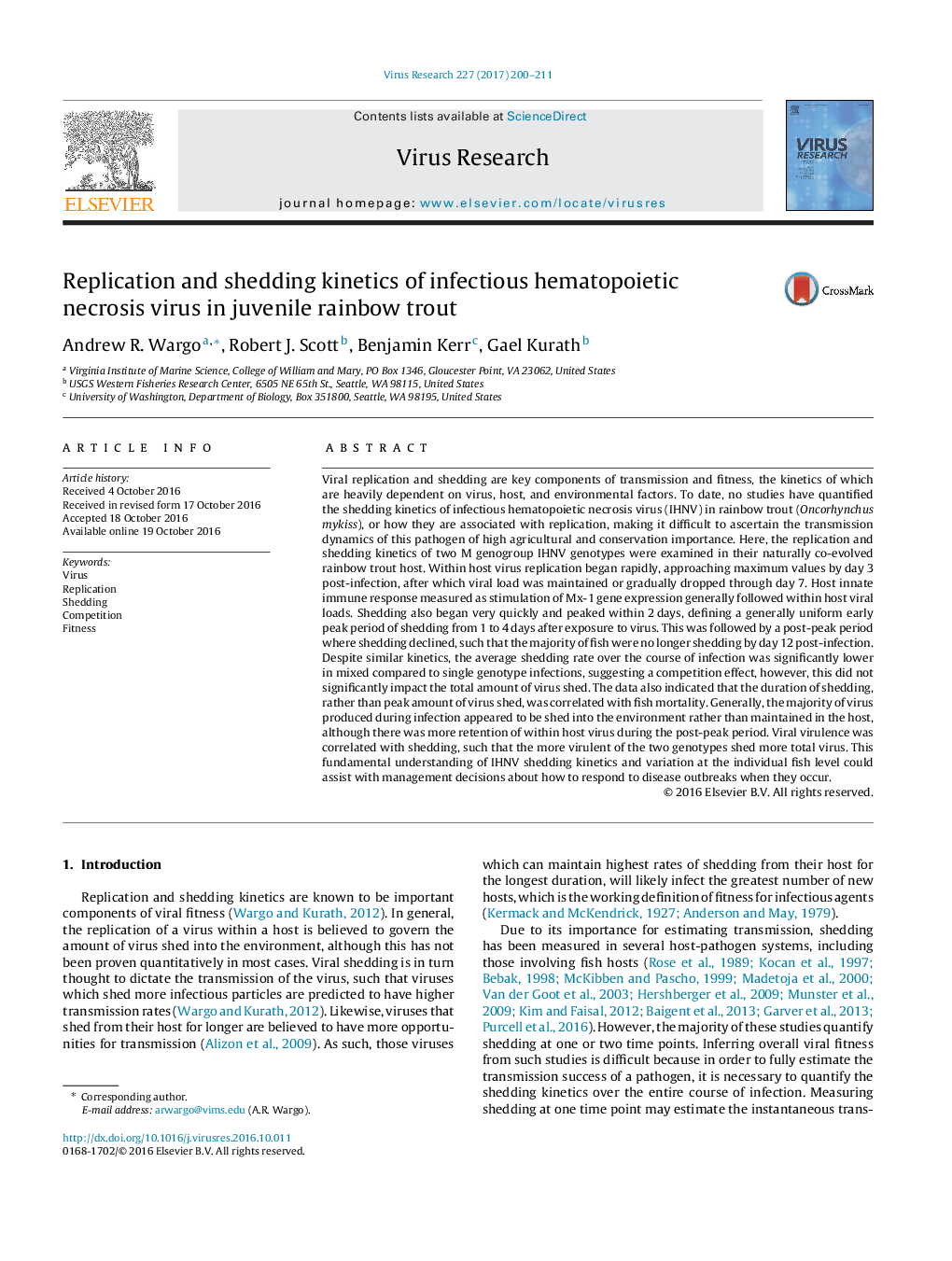| کد مقاله | کد نشریه | سال انتشار | مقاله انگلیسی | نسخه تمام متن |
|---|---|---|---|---|
| 5675493 | 1594330 | 2017 | 12 صفحه PDF | دانلود رایگان |
عنوان انگلیسی مقاله ISI
Replication and shedding kinetics of infectious hematopoietic necrosis virus in juvenile rainbow trout
ترجمه فارسی عنوان
تکراری و سقط جنین از ویروس ناکروز خون کلیوی در ماهی قزل آلای رنگین کمان نوجوان
دانلود مقاله + سفارش ترجمه
دانلود مقاله ISI انگلیسی
رایگان برای ایرانیان
کلمات کلیدی
ویروس، تکثیر، ریختن رقابت، تناسب اندام،
موضوعات مرتبط
علوم زیستی و بیوفناوری
ایمنی شناسی و میکروب شناسی
ویروس شناسی
چکیده انگلیسی
Viral replication and shedding are key components of transmission and fitness, the kinetics of which are heavily dependent on virus, host, and environmental factors. To date, no studies have quantified the shedding kinetics of infectious hematopoietic necrosis virus (IHNV) in rainbow trout (Oncorhynchus mykiss), or how they are associated with replication, making it difficult to ascertain the transmission dynamics of this pathogen of high agricultural and conservation importance. Here, the replication and shedding kinetics of two M genogroup IHNV genotypes were examined in their naturally co-evolved rainbow trout host. Within host virus replication began rapidly, approaching maximum values by day 3 post-infection, after which viral load was maintained or gradually dropped through day 7. Host innate immune response measured as stimulation of Mx-1 gene expression generally followed within host viral loads. Shedding also began very quickly and peaked within 2Â days, defining a generally uniform early peak period of shedding from 1 to 4Â days after exposure to virus. This was followed by a post-peak period where shedding declined, such that the majority of fish were no longer shedding by day 12 post-infection. Despite similar kinetics, the average shedding rate over the course of infection was significantly lower in mixed compared to single genotype infections, suggesting a competition effect, however, this did not significantly impact the total amount of virus shed. The data also indicated that the duration of shedding, rather than peak amount of virus shed, was correlated with fish mortality. Generally, the majority of virus produced during infection appeared to be shed into the environment rather than maintained in the host, although there was more retention of within host virus during the post-peak period. Viral virulence was correlated with shedding, such that the more virulent of the two genotypes shed more total virus. This fundamental understanding of IHNV shedding kinetics and variation at the individual fish level could assist with management decisions about how to respond to disease outbreaks when they occur.
ناشر
Database: Elsevier - ScienceDirect (ساینس دایرکت)
Journal: Virus Research - Volume 227, 2 January 2017, Pages 200-211
Journal: Virus Research - Volume 227, 2 January 2017, Pages 200-211
نویسندگان
Andrew R. Wargo, Robert J. Scott, Benjamin Kerr, Gael Kurath,
